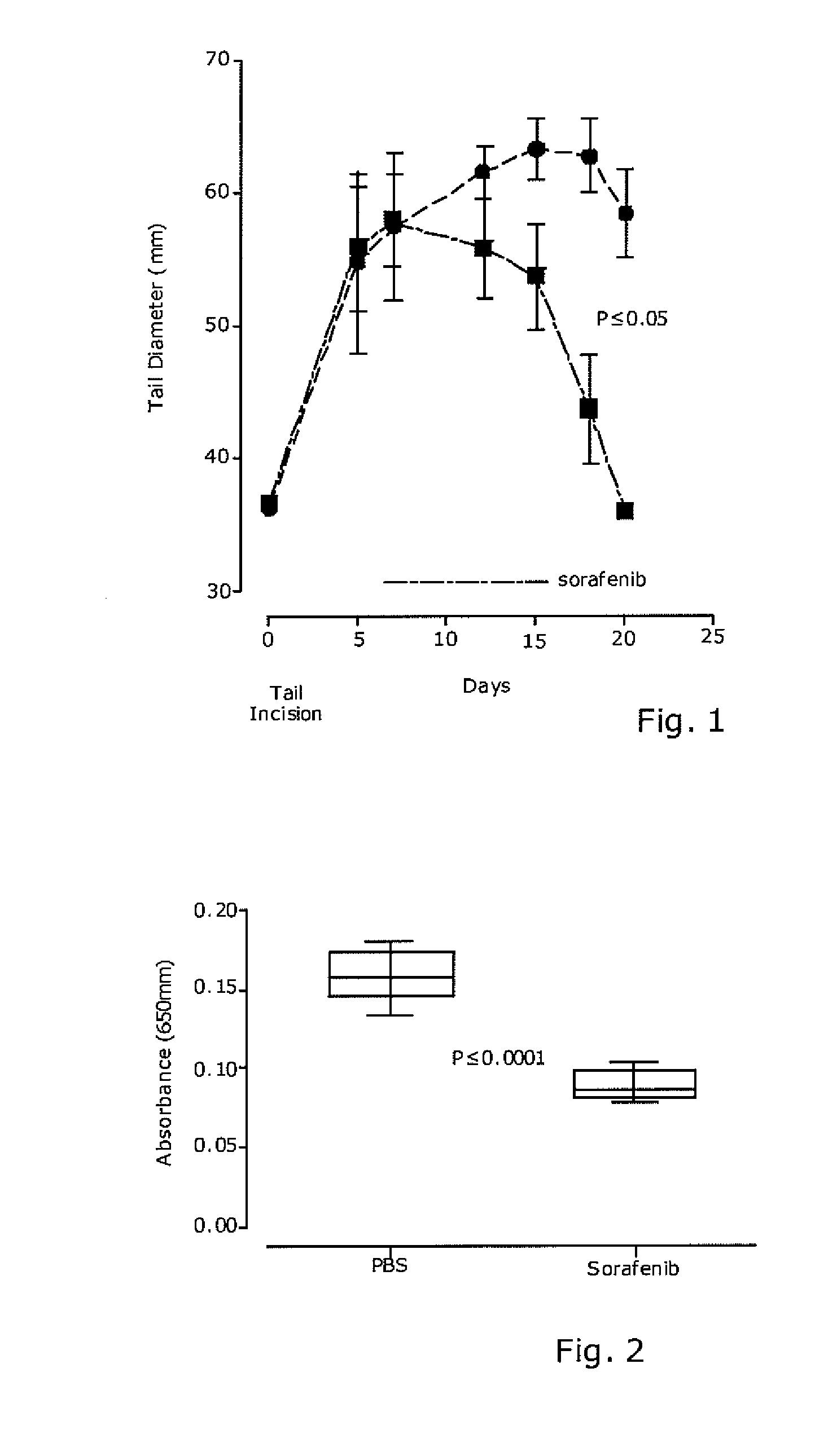Use of multi-kinase inhibitors in the treatment of vascular hyperpermeability
a multi-kinase inhibitor and hyperpermeability technology, applied in the direction of drug compositions, peptides, extracellular fluid disorders, etc., can solve the problems of limited efficacy, no effective lymphedema treatment option, cardiac failure,
- Summary
- Abstract
- Description
- Claims
- Application Information
AI Technical Summary
Benefits of technology
Problems solved by technology
Method used
Image
Examples
experiment 1
Mouse Tail Model of Lymphedema
[0049]Six- to eight-wk-old female C57BL / 6 mice with body weight of 20 to 25 g, were purchased from Charles River (Milano, Italy, EU). Mice were housed under standard laboratory conditions according to the Applicant's institutional guidelines. Animal experiments were performed according to the Italian laws (Law Decree 116 / 92 and following additions), which enforce the EU 86 / 109 Directive, and were approved by the institutional Ethical Committee for Animal Experimentation.
[0050]To create lymphedema, a circumferential incision was made through the dermis close to the tail base to sever the dermal lymphatic vessels. The edges of this incision were then pushed apart, thereby severing the deeper draining lymphatics, preventing superficial bleeding, and creating a 2-3 mm gap to delay wound closure. Care was taken to maintain the integrity of the major underlying blood vessels and tendons so that the tail distal to the incision did not become necrotic.
[0051]Fiv...
experiment 2
Miles Vascular Permeability Assay
[0053]Since a significantly reduced edema formation in sorafenib-treated mice was found, the Applicants next investigated whether multi-kinase inhibitor sorafenib might reduce vascular hyperpermeability. A Miles vascular permeability assay using intrasplenic injection of the blue dye Evans blue was perfomed in untreated and sorafenib-treated mice bearing a surgical-induced tail lymphedema.
[0054]Six- to eight-wk-old female C57BL / 6 mice with body weight of 20 to 25 g, were used in this experiment. Tail lymphedema was generated by a circumferential incision through the dermis close to the tail base, as described above. Five days following circumferential incision, mice showed distal tail lymphedema and were randomly assigned to receive control vehicle or sorafenib (60 mg / kg / die) from days 5 to 9 and 12 to 16. On day 16, mice received the last dose of sorafenib and 2 hrs later were injected through the spleen with 0.1 ml of 1% Evan's blue in PBS. After...
PUM
| Property | Measurement | Unit |
|---|---|---|
| body weight | aaaaa | aaaaa |
| diameter | aaaaa | aaaaa |
| diameter | aaaaa | aaaaa |
Abstract
Description
Claims
Application Information
 Login to View More
Login to View More - R&D
- Intellectual Property
- Life Sciences
- Materials
- Tech Scout
- Unparalleled Data Quality
- Higher Quality Content
- 60% Fewer Hallucinations
Browse by: Latest US Patents, China's latest patents, Technical Efficacy Thesaurus, Application Domain, Technology Topic, Popular Technical Reports.
© 2025 PatSnap. All rights reserved.Legal|Privacy policy|Modern Slavery Act Transparency Statement|Sitemap|About US| Contact US: help@patsnap.com

